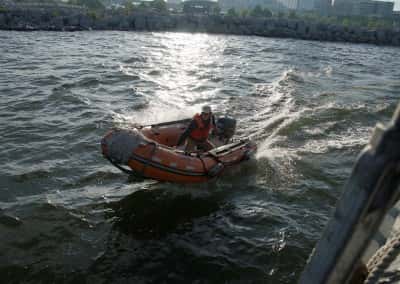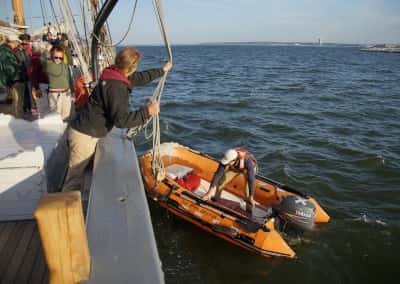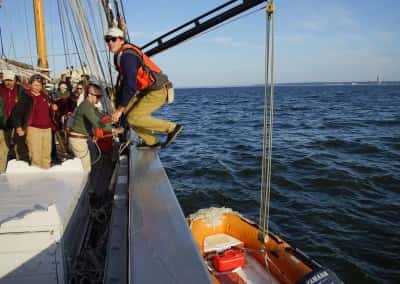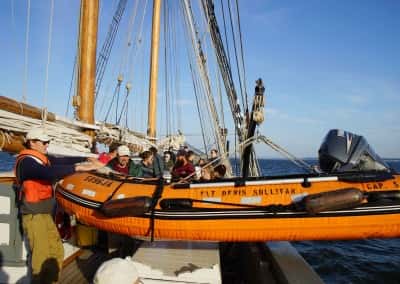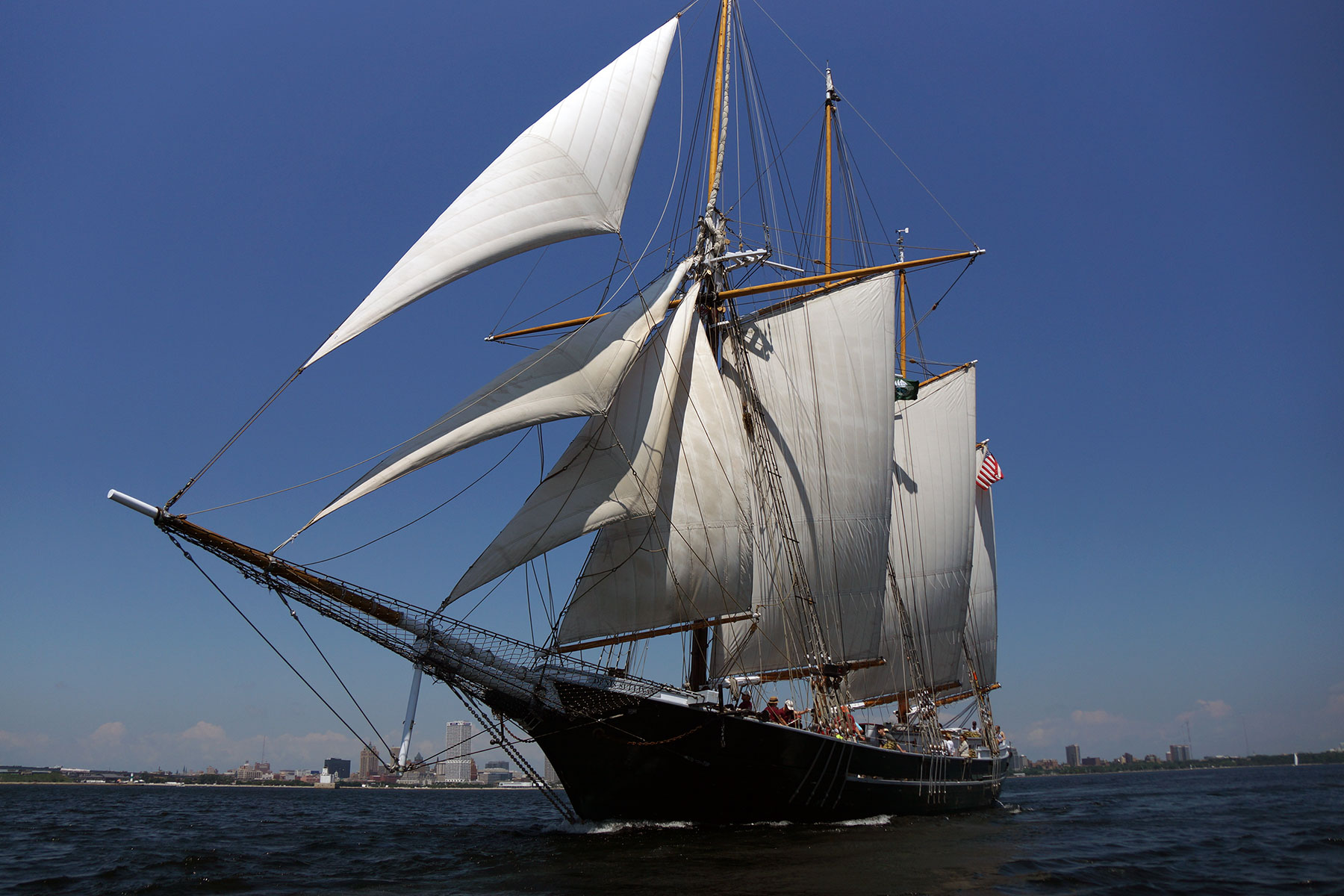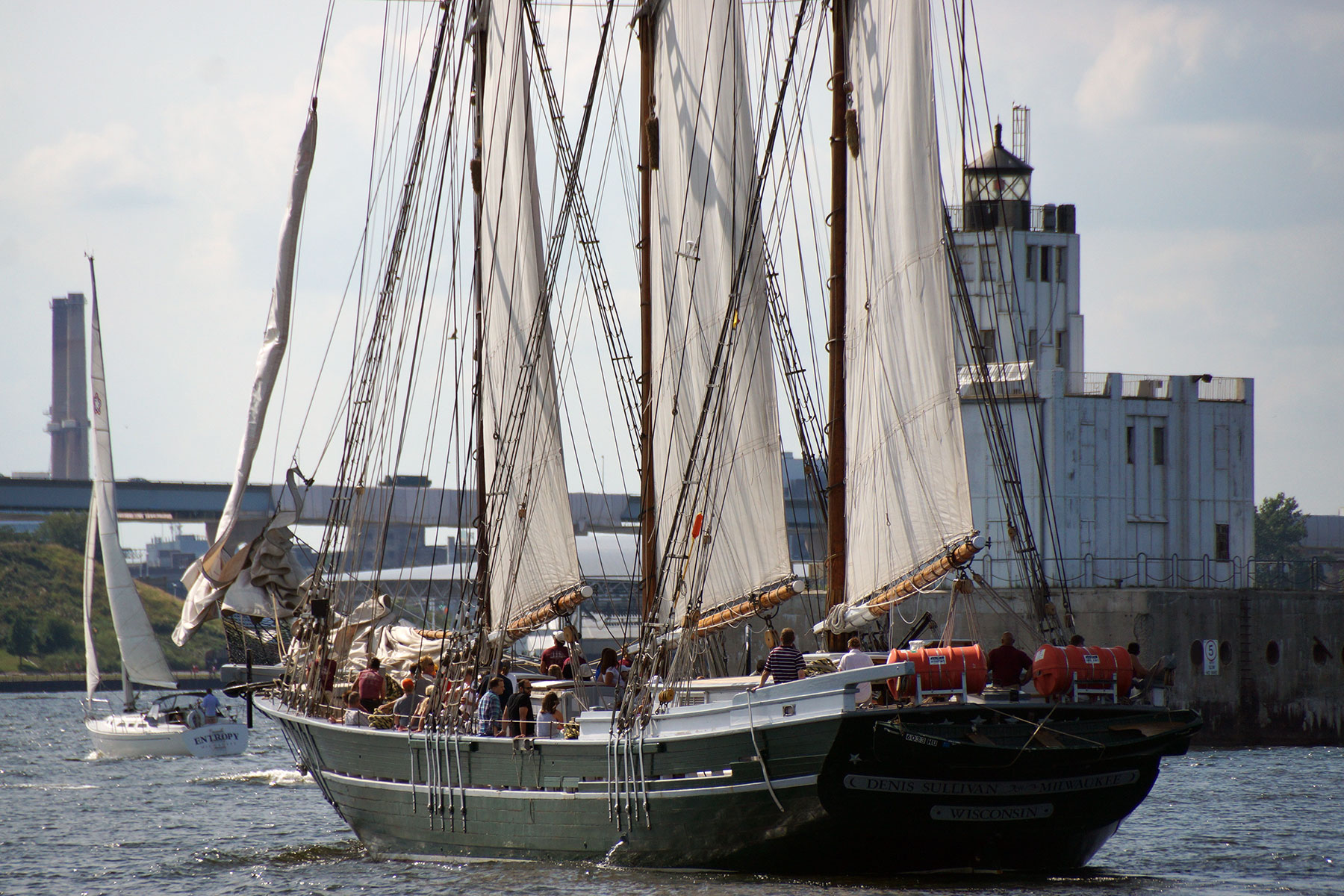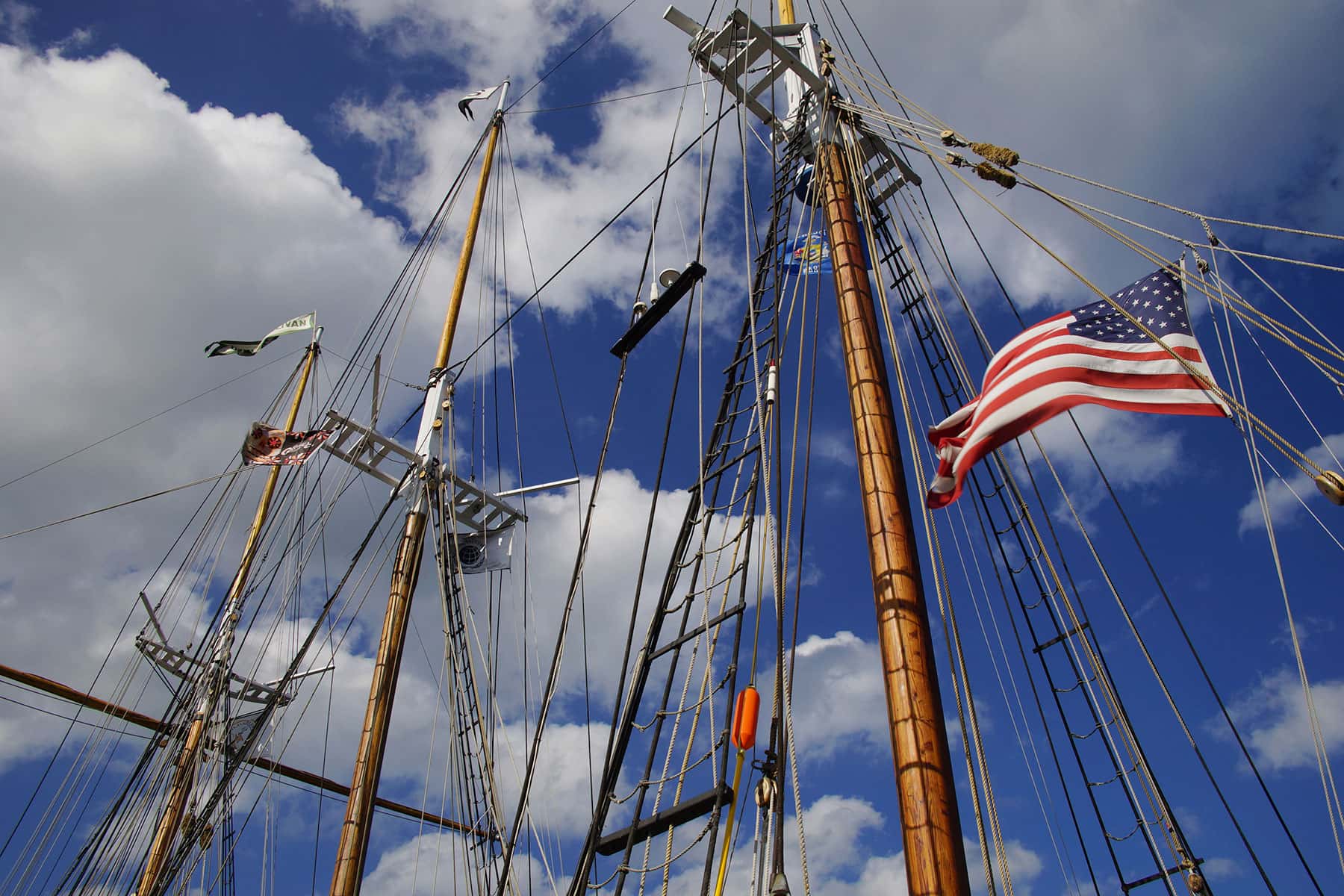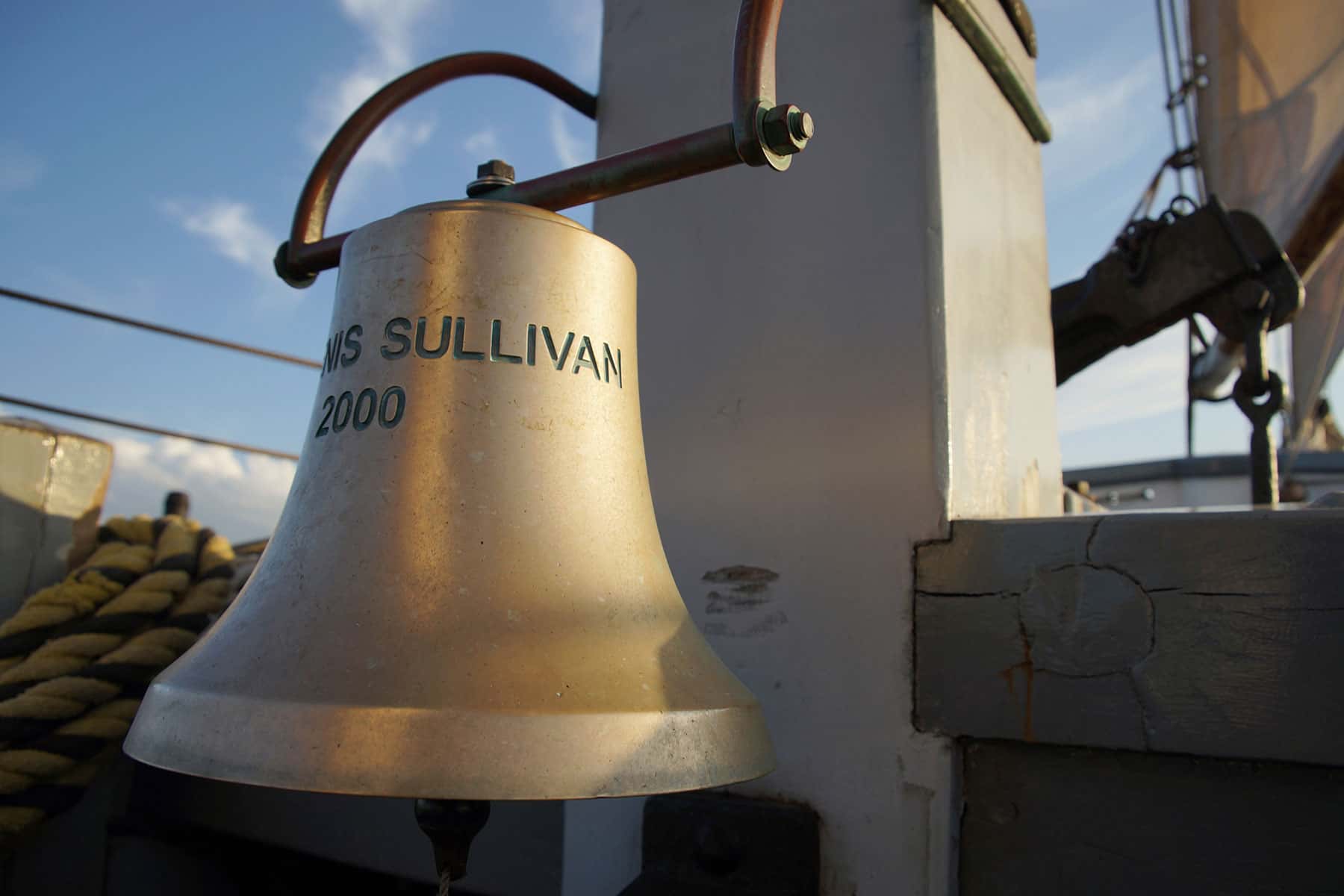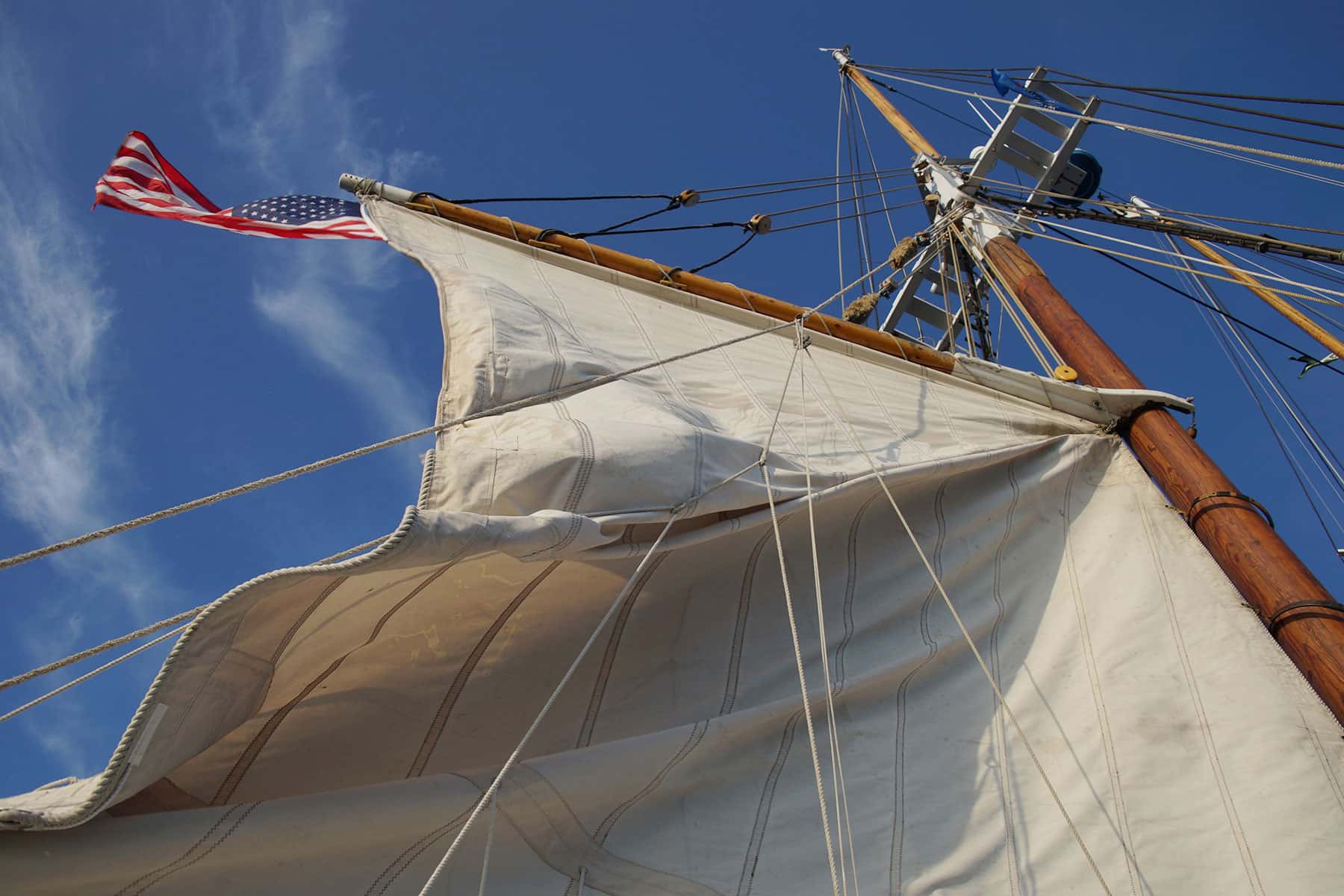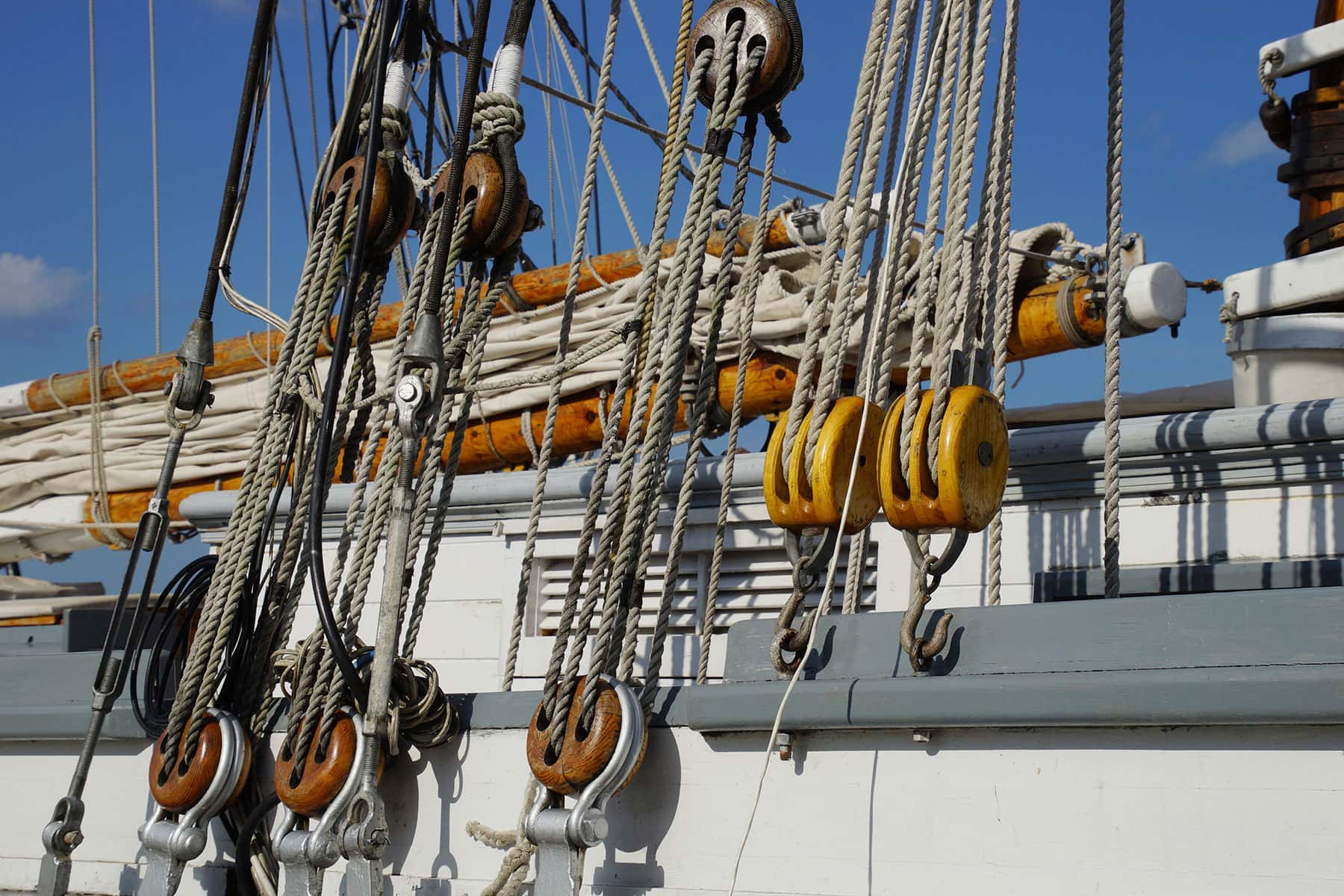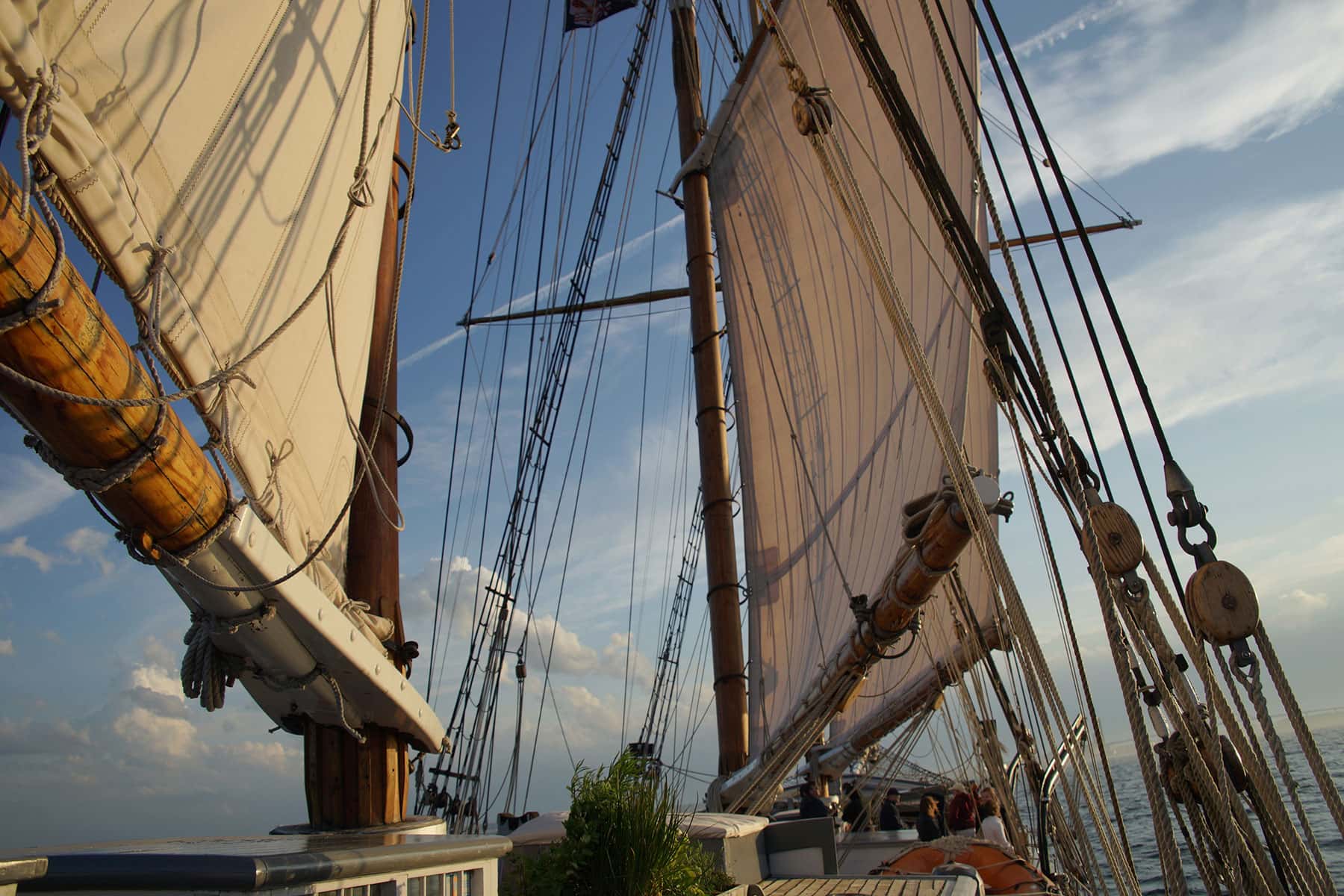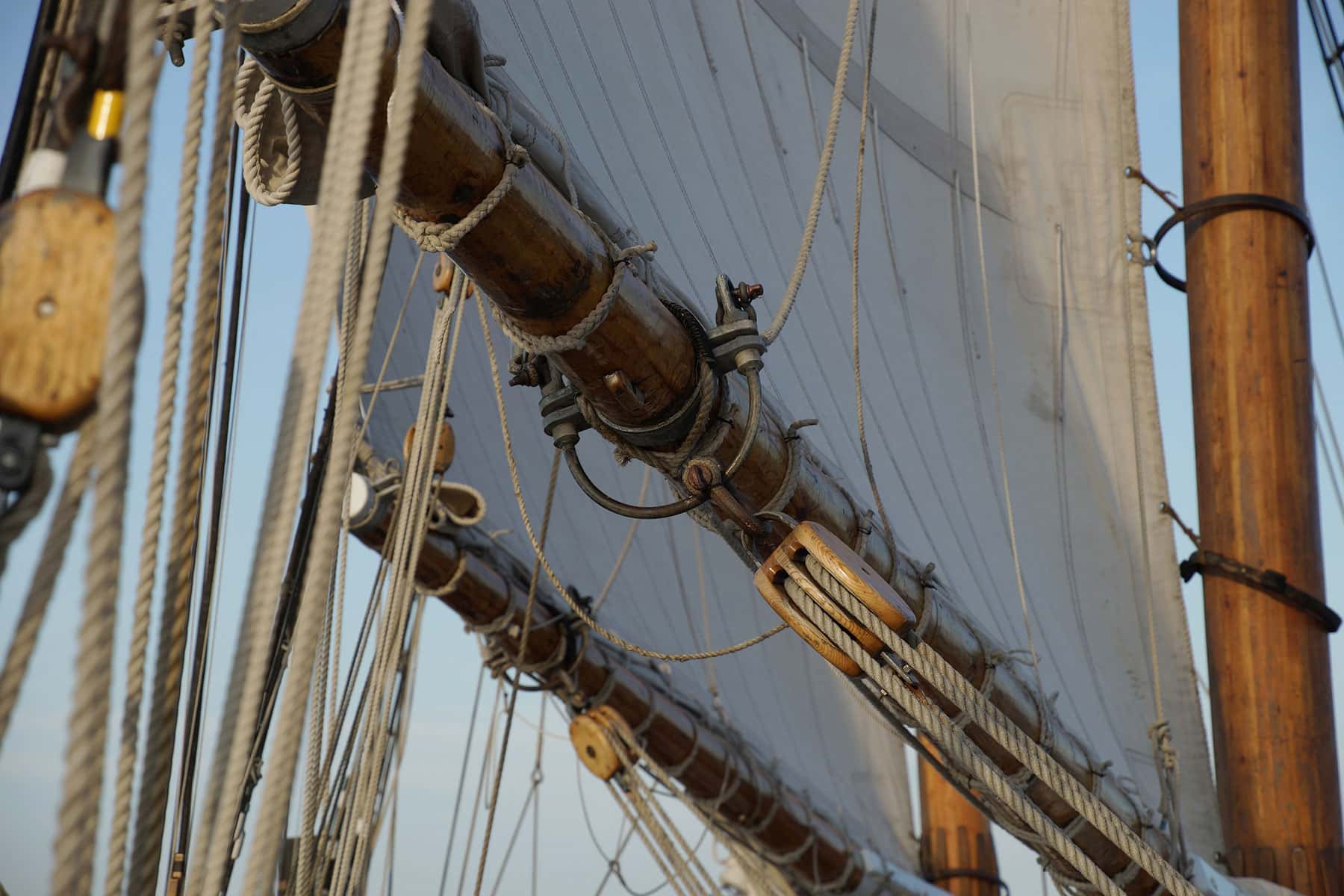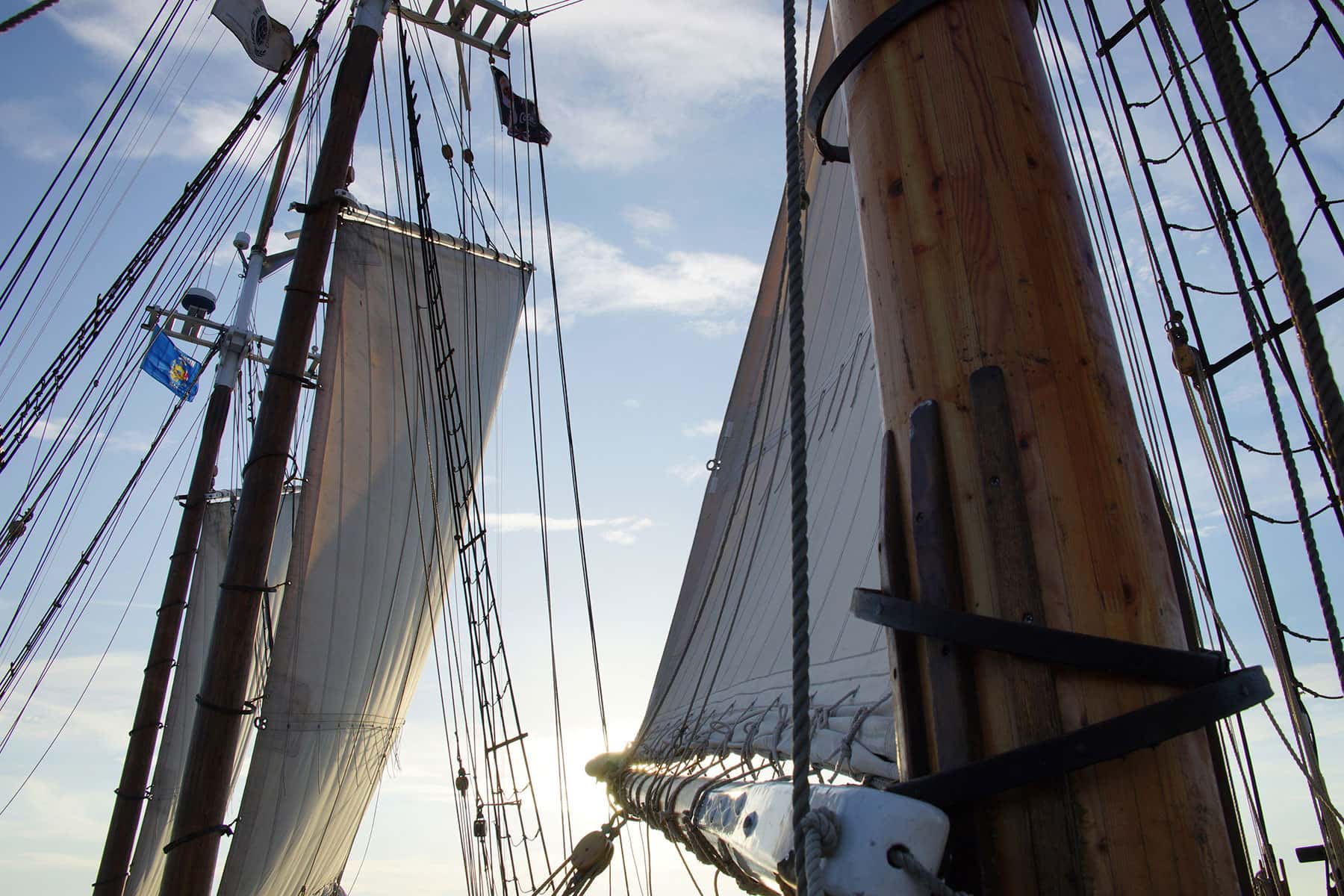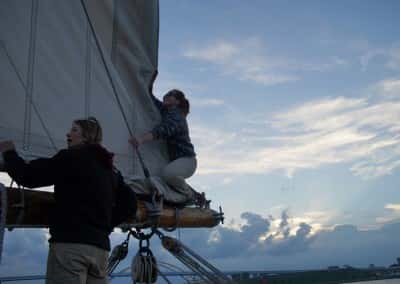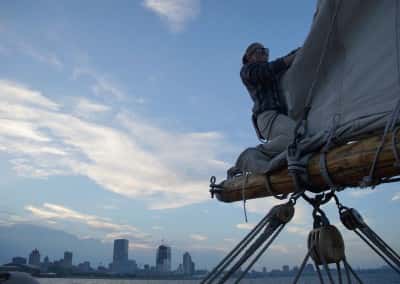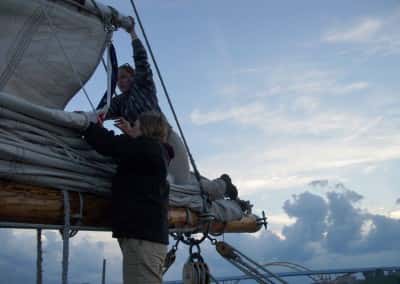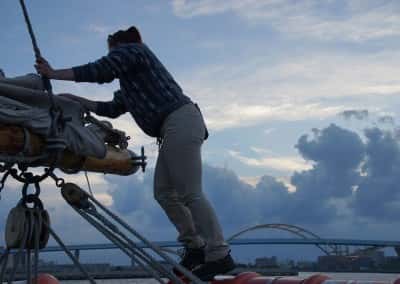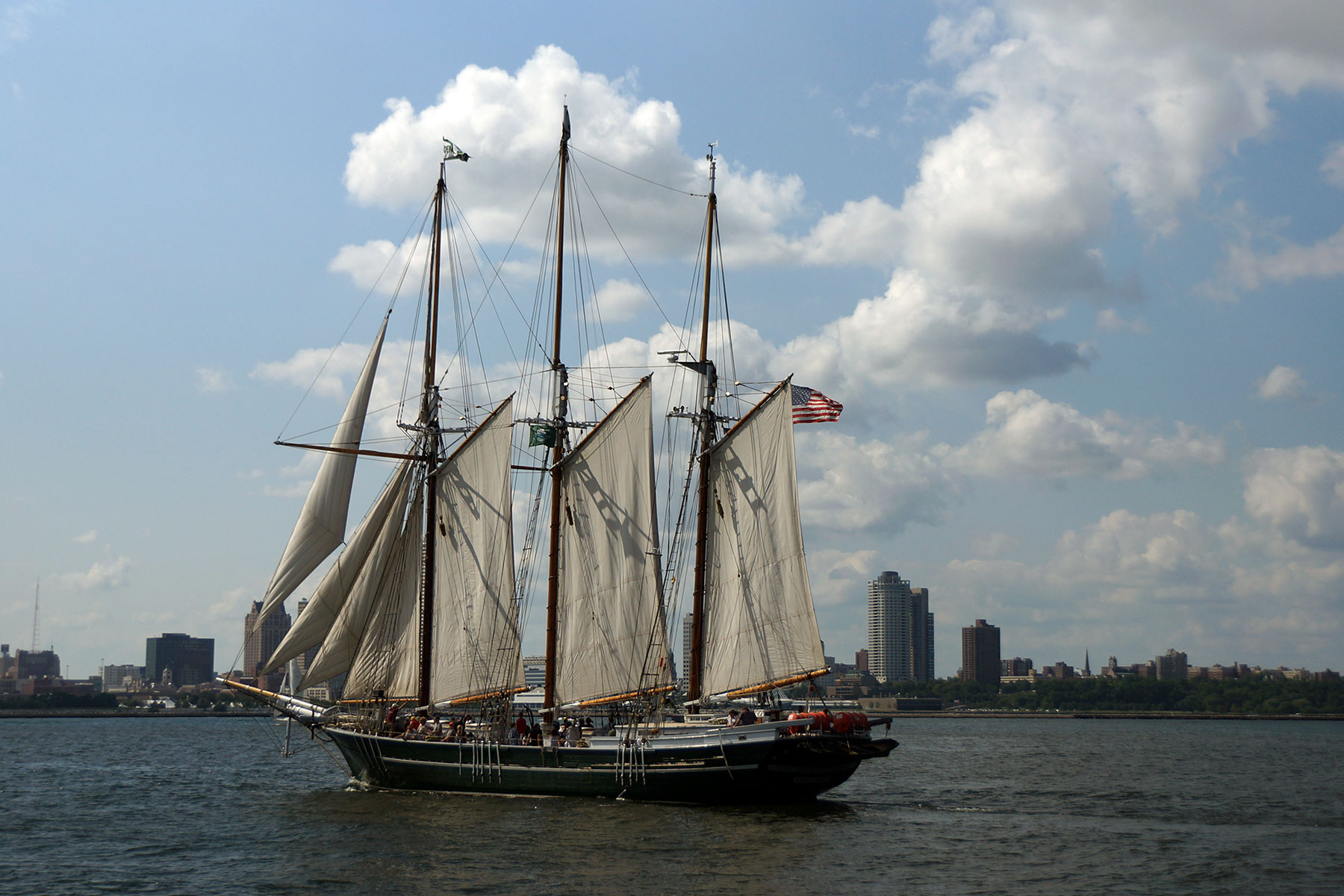
Discovery World’s S/V Denis Sullivan will be a part of the Tall Ships Festival, that will be sailing the Great Lakes connecting the United States and Canada in the Summer of 2016.
The world’s only re-creation of a 19th century three-masted Great Lakes schooner joins two segments of the multi-port event, beginning August 12 when it sails to Duluth, Minnesota. Along with an armada of up to a dozen other tall ships, the Sullivan will represent Milwaukee in the Parade of Sail and compete in a tall ship race across the length of Lake Superior for the first half of its nautical adventure. After a brief return to Milwaukee it moves along with the Pride of Sale to Erie, Pennsylvania for the second half of its event participation, and ultimately docking back at its home port for the season on September 19.
Completed in Milwaukee, Wisconsin in 2000, it was built by professional shipwrights and nearly a thousand volunteers. The schooner is a modern educational sailing vessel that has two diesel engines, a scientific laboratory, two computer workstations, with modern communication and navigation equipment. The S/V Denis Sullivan provides an array of genuine maritime experiences, from two-hour Lake excursions for families to multi-day educational sails for teens and adults.
“We are going to join all these other tall ships at different cities for their sailing festivals. So we will traveling with them, and we will be open as an attraction at these different ports.” Carlos Canario, one of the sailing Captains of S/V Dennis Sullivan. “It is a lot of fun to have so many tall ships in one place at the same time. It’s also great to meet a lot of tall ships sailors, people from other places, and reconnect with past crew members who we haven’t seen in years.”
Because or the close proximity to Chicago, the Port of Milwaukee has been excluded as a destination from all Tall Ships Festival sails. Even though the Cream City is not involved, its ship is still an ambassador.
Tall Ships America is hosting the string of events from July to September, and the nonprofit group is commended by the United States Congress as the national sail training organization, with a focus on the preservation of the maritime heritage of North America. The Tall Ships Challenge is the annual series of tall ship races and maritime port festivals to celebrate maritime traditions and to inform the general public about the transformative power of adventure and education under sail.
The Tall Ships Challenge was last held on the Great Lakes in 2013, and also alternates between the Atlantic and Pacific coasts.
This year’s event is expected to draw tens of thousands of visitors to each of the eight major port cities that are participating. It has proven so popular that tickets to sail on the ships have sold out quickly at various venues. The Green Bay area alone is expected to see a $3.6 million dollar economic impact from the event, while Chicago is projected to attract 2 million people attend.
With its absence of the S/V Dennis Sullivan in Milwaukee for several weeks, public sailing opportunities this summer will far less. So the public is encouraged to make early reservations for available spots.
View the Photo Essay: Sailing the Great Lakes for a look at what it is like to be onboard a Great Lakes schooner.
Scheduled port events for the Tall Ships Challenge are:
July 1–3
July 8–10
July 15–17
July 27–31
August 5–7
August 18–21
September 8–11
September 17–18
Toronto, Ontario
Fairport Harbor, Ohio
Bay City, Michigan
Chicago, Illinois
Green Bay, Wisconsin
Duluth, Minnesota
Erie, Pennsylvania
Brockville, Ontario
Redpath Waterfront Festival Toronto
Tall Ships Fairport Harbor 2016
Tall Ships Celebration: Bay City
Tall Ships Chicago 2016
Baylake Bank Tall Ships Festival
Tall Ships Duluth 2016
Tall Ships Erie 2016
Tall Ships Brockville
Ships participating along with the S/V Sullivan in the festival and race include:
El Galeón Andalucía
The Galeón Andalucía is a replica of a 16th-17th century galleon, the only one in the world that sails in present days. These ships were the type of vessel used by the Spanish Crown for maritime expeditions during the 16th through the 18th centuries. Galleons were intended to discover and then establish trade routes between Spain, America and the Philippines islands, and formed what was then called the “Fleet of the Indies”. For three centuries, these Spanish galleons crossed the Atlantic Ocean back and forth, sailed around the Caribbean Sea and the American coasts, and covered the Pacific route as well. They carried plenty of seamen, merchant traders and settlers, while their holds bore the fabulous loads resulting from American and Asian trade.this is a 500 ton galleon, with length overall reaching 160 feet and a beam of 32 feet. Four masts hold 6 sails which measure almost 11,000 square feet. Her average speed is 7 knots. Since her launching, a crew between 15 to 35 people have manned her across the seas and oceans around the world. She has navigated the Pacific and Indian oceans, crossed the Atlantic Ocean, and her wake has spread over the Mediterranean Sea, the Red Sea, the South and East China seas, the Aegean Sea, the Bosphorus strait, the Caribbean Sea and the whole East Coast of the US, covering thousands of nautical miles in an attempt to evoke her ancestors.
Draken Harald Hårfagre
With a length of 114 feet, 27 feet on the beam, displacing seventy tons, and with a 3,200 square foot sail of pure silk the ship is named after Harald Fairhair, the king who unified Norway into one kingdom. In April 2016 Draken Harald Hårfagre, the worlds largest viking ship built in modern times, left her home port in Haugesund, Norway and sailed off for a challenging voyage across the North Atlantic Ocean. The aim is to explore and relive one of the most mythological sea voyages – the first transatlantic crossing, and the Viking discovery of the New World, more than a thousand years ago. History tells us about the Viking explorer, Leif Eriksson, who discovered America over 500 years before Christopher Columbus. The expedition is all about exploring the world, just like the Vikings did. The project will, like Leif Eriksson, create intercultural meetings and inspire people to go beyond the horizon in a modern Viking saga. Along the traditional route, the ship will pass Viking settlements and new archaeological findings.
U.S. Brig Niagara
On September 10, 1813, nine small ships, including Niagara, defeated a British squadron of six vessels in the Battle of Lake Erie. A pivotal event in the War of 1812, it led to regaining Detroit, lost at the war’s outset, and lifted the nation’s morale. The U.S. Brig Niagara is a two-masted, square-rigged sailing vessel, 198 feet sparred length, 118 feet tall. The current Niagara, the third reconstruction of the original vessel, was launched in Erie in 1988, the 175th anniversary of the Battle of Lake Erie. Niagara sails the Great Lakes, preserving and interpreting the story of the Battle of Lake Erie, and acting as an ambassador in her capacity as the flagship of the Commonwealth of Pennsylvania. As a Sailing School Vessel, her crew of professionals and trainees actively preserve the skills of square-rig seamanship.
Madeline
The schooner Madeline is a reconstruction of a mid-19th century Great Lakes schooner and one of the State of Michigan’s official tall ships. She was built between 1985 and 1990 in Traverse City, Michigan by volunteer members of the non-profit group, the Maritime Heritage Alliance. Her mission is to serve as a floating center for the interpretation of Great Lakes maritime history.
Windy
The Tall Ship Windy, is a 148 foot traditional four masted gaff topsail schooner. She offers fireworks cruises, pirate cruises, and a variety of other public and private cruises in Chicago. She is built of modern materials, however, like old trading schooners and sail training ships, the WINDY has all the character and charm of the great Age of Sail.
Appledore V
The Appledore V is a 65 feet, steel-hulled gaff topsail schooner launched in 1992, owned and operated by BaySail, a non-profit educational organization. Her homeport is Bay City, Michigan, on Lake Huron’s Saginaw Bay, a port with a long history in ships and sailing ships in particular. Her summer months sail training program, “Windward Bound”, engages six youth trainees in every aspect of running the ship, from navigation and helmsmanship, to sail handling, galley duty, even manning the oars in Appledore’s tender when they go ashore. Her usual sailing waters are in the Great Lakes, from Lake Huron’s North Channel, to Mackinac Island, and up to Sault Sainte Marie and Lake Superior.
Pride of Baltimore II
Pride of Baltimore II, a 157’ topsail schooner, is a reconstruction of an early 19th-century Baltimore Clipper, Chasseur. Baltimore Clippers became famous as privateers during the War of 1812 and Chasseur was one of the most successful. She blockaded the British Isles by herself and captured or sank 17 vessels before returning home to be greeted by cheering crowds and dubbed the “Pride of Baltimore.” Pride of Baltimore and Pride of Baltimore II have represented Baltimore and Maryland for nearly four decades, spreading a positive message throughout the world. Since 1988, Pride II has sailed 250,000 nautical miles – the equivalent of almost 12 times around the world – and visited more than 200 ports in 40 countries, promoting historical maritime education, and fostering economic development and tourism. Pride II is available to the public for daysails, sailing and dockside receptions, and overnight voyages between ports of call.
When & If
A 63 foot Alden schooner commissioned by General George S. Patton and built by Pendleton in Wiscasset, Maine, When And If was perhaps the strongest vessel Alden built incorporating improvements for comfort and safety on the high seas which half a lifetime of sailing experience had taught him. Maintained in impeccable condition, When And If remained in the Patton family until 1972 when the General’s nephew, Neal Ayer, made a gift of the vessel to the Landmark school in Prides Crossing, MA where she was the centerpiece of a sail training program for dyslexic children. After extensive storm damage in 1990, When And If passed back into private ownership and was painstakingly rebuilt over the course of the next three years. Walter Cronkite spoke at the re-launching in June of 1994. When And If spent the next 17 years cruising the coast of the U.S. and occasionally racing in classic yacht regattas. Early in 2012 Doug Hazlitt purchased the When And If and returned the vessel to its original and Bristol condition.
Mist of Avalon
The ship began her life in 1967 as the Motor Vessel “Liverpool Bay”. She was built from strong native timber and the skilled hands of the shipwrights of MacLean Shipbuilding, Mahone Bay, Nova Scotia, Canada. Her Captain and crew worked the Banks off Nova Scotia and Newfoundland, fishing for the cod that were her reason for being. After twenty years working, in 1987 she was left abandoned at a Halifax pier. In 1992 Captain George Mainguy started converting her to a 19th century Grand Banks schooner. In the summer of 1997, now as “Mist of Avalon” the ship returned to sea for her maiden voyage under sail. The occasion was the fleet journey to Bonavista to rendezvous with the replica of John Cabot’s “Mathew” at Bonavista Newfoundland. Since that time the ship has appeared in numerous feature films and documentaries in addition to being a star attraction at maritime festivals.
Zeeto
Zeeto Built 1954, by a building architect in Sarasota, Florida, after a design by Howard Chappelle for an 1850’s fishing schooner. Zeeto means “long live the king” in Greek. It sailed the Caribbean as a private vessel for many years, making its way to Boston, where it was advertised as “the three-masted vessel in Boston Harbor without cannons,” and was chartered. In the late 1990’s, it came to Lake Superior where it was chartered until 2002. Its present owner renovated the vessel to exceptional condition and sails it around Lake Superior.

